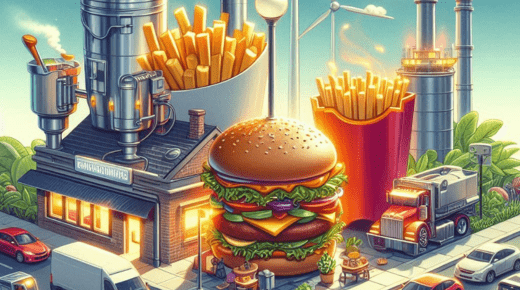When most people pass a drive-thru, they’re thinking about coffee, convenience, or a quick lunch—not community economics. But behind the counters and order screens, something much bigger is happening. Quick Service Restaurants (QSRs) are quietly becoming engines of local job creation, commercial revitalization, and urban regeneration.
In cities like Tampa and Lakeland, where population growth and suburban expansion are transforming the landscape, QSR real estate is emerging as a powerful tool in shaping not just where people eat—but how cities function.
The Domino Effect of a Well-Placed QSR
QSRs are typically the first wave of new commercial development in expanding neighborhoods. Why? Because they bring immediate utility and visibility—and with them, a ripple effect:
- First jobs and frontline employment for young workers or career-starters
- Secondary business growth, from janitorial services to supply logistics
- Traffic flow improvements, as municipalities upgrade roads and intersections around busy nodes
- Increased foot traffic that supports small retailers or service providers
These outcomes are no accident. Behind them are experienced Lakeland real estate developers and Tampa real estate developers who understand how strategic QSR placements can anchor entire commercial zones.
QSRs as Urban Stabilizers and Neighborhood Signals
In established urban districts, a new QSR is more than just another lunch option—it’s a vote of confidence in the neighborhood’s future. When major brands commit to a site, they do so after intense vetting of:
- Demographic data
- Income trends
- Commuter behavior
- Market saturation
So, when a QSR breaks ground, it often signals to other investors that the area is primed for further development. And in Florida, that makes QSR projects a critical part of neighborhood stabilization and economic signaling.
The Developer’s Role: More Than Land Deals
The process of bringing a QSR project to life involves much more than site acquisition. Developers like Lawrence Todd Maxwell manage a complex blend of:
- Zoning and land-use negotiations
- Traffic and environmental impact studies
- End-user feasibility reports
- Community engagement and municipal coordination
It’s this behind-the-scenes expertise that ensures each QSR isn’t just a building—but a community asset designed for long-term viability and integration.
Lakeland and Tampa: Different Scales, Same Impact
- In Lakeland, QSR sites are helping to activate growing residential corridors—serving families, commuters, and local workers in areas where traditional retail is just taking root.
- In Tampa, urban infill QSR projects are revitalizing underutilized lots, creating high-efficiency food access points in dense districts with mixed demographics.
In both cases, the projects are more than real estate—they’re part of a broader civic ecosystem.
Final Thought: A Drive-Thru to Economic Development
QSR real estate may look like it’s all about speed and convenience, but the best developments are also grounded in economic strategy, social dynamics, and long-term planning. They’re places where food meets function—where community needs and commercial potential intersect.
And in the hands of forward-thinking Lakeland real estate developers and Tampa real estate developers, these humble buildings are powering the next chapter of Florida’s local economies—one order at a time.




